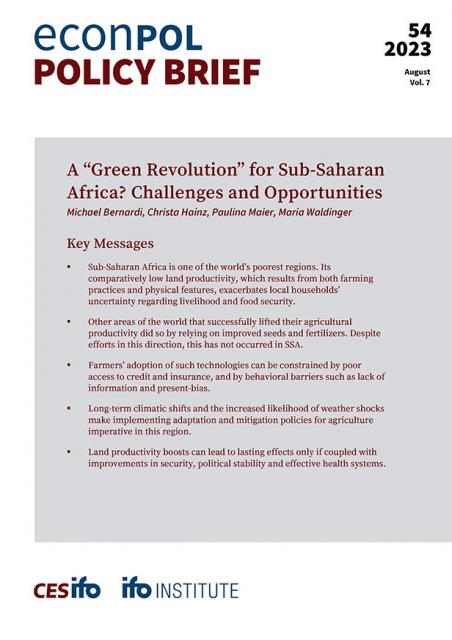A “Green Revolution” for Sub-Saharan Africa? Challenges and Opportunities
Key Messages
- Sub-Saharan Africa is one of the world’s poorest regions. Its comparatively low land productivity, which results from both farming practices and physical features, exacerbates local households’ uncertainty regarding livelihood and food security.
- Other areas of the world that successfully lifted their agricultural productivity did so by relying on improved seeds and fertilizers. Despite efforts in this direction, this has not occurred in SSA.
- Farmers’ adoption of such technologies can be constrained by poor access to credit and insurance, and by behavioral barriers such as lack of information and present-bias.
- Long-term climatic shifts and the increased likelihood of weather shocks make implementing adaptation and mitigation policies for agriculture imperative in this region.
- Land productivity boosts can lead to lasting effects only if coupled with improvements in security, political stability and effective health systems.
Sub-Saharan Africa ranks as one of the world’s poorest regions. The causes of this are exceptionally complex, with political instability, lack of security, low levels of education, poor access to infrastructure and lack of integration into global trade networks as the leading explanations, among others. In recent decades, economists and agricultural development experts have been looking for ways to increase agricultural productivity in Sub-Saharan Africa through improved seeds, fertilisers and more modern farming technologies. This article looks at the measures in question, what has been done so far, and how scientists assess the effectiveness of these measures on agricultural productivity and poverty reduction. Finally, we present concrete recommendations.
Michael Bernardi, Christa Hainz, Paulina Maier, Maria Waldinger: “A “Green Revolution” for Sub-Saharan Africa? Challenges and Opportunities,” EconPol Policy Brief 54, August 2023.
